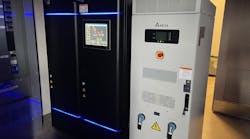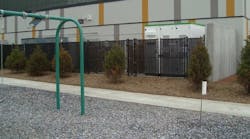Hundreds of APS Solar Partner Program customers are set to help the Phoenix-headquartered utility make history. Advanced technology installed along with participants’ solar panels is beginning to collect data that will help APS better understand and manage the energy flowing into neighborhoods across the state. APS is the first utility in the nation to deploy and control this advanced technology remotely —meaning the utility can operate the solar installations as they would a power plant, ramping up or curtailing power based on customers’ real-time energy needs.
The device, called an advanced inverter, will help APS regulate the amount of energy flowing into the grid in neighborhoods with participating SPP customers. This power quality regulation is no different than what the utility does 24/7/365. However, with the explosion of distributed energy installations across the state, managing the energy flow on the grid — to ensure customers continue to receive safe, reliable electricity — has become a greater challenge, with mini power plants appearing on rooftops all over Arizona.
“Energy used to flow in one direction, from our power plants to a customer’s home or business. That is no longer true today,” said Scott Bordenkircher, APS Director of Technology Innovation. “With the deployment of distributed generating resources like rooftop solar, energy now flows back and forth on the grid. Advanced inverters will help us better manage the grid — for the safety of our crews working on the power lines, and so customers can continue to receive the reliable electricity they have come to expect from APS.”
The Solar Partner Program was launched in early 2015, when the company enlisted the help of 1,500 customers to host rooftop solar systems at no cost to the customer. In fact, the utility is essentially renting the customer’s roof for $360 a year for the next 20 years. Advanced inverters were installed along with the solar panels, helping the utility test the new technology that will benefit all of APS’s 1.2 million customers.
“The small power plants found on customer rooftops across the state present interesting challenges to service quality and reliability, and advanced inverters are a technology APS believes can help avoid service disruptions and power quality issues,” Bordenkircher said. “APS is taking an industry lead with this program – and others like it – that will ultimately provide data essential to helping utilities achieve a more reliable and sustainable grid, while providing for greater customer technology choice.”



